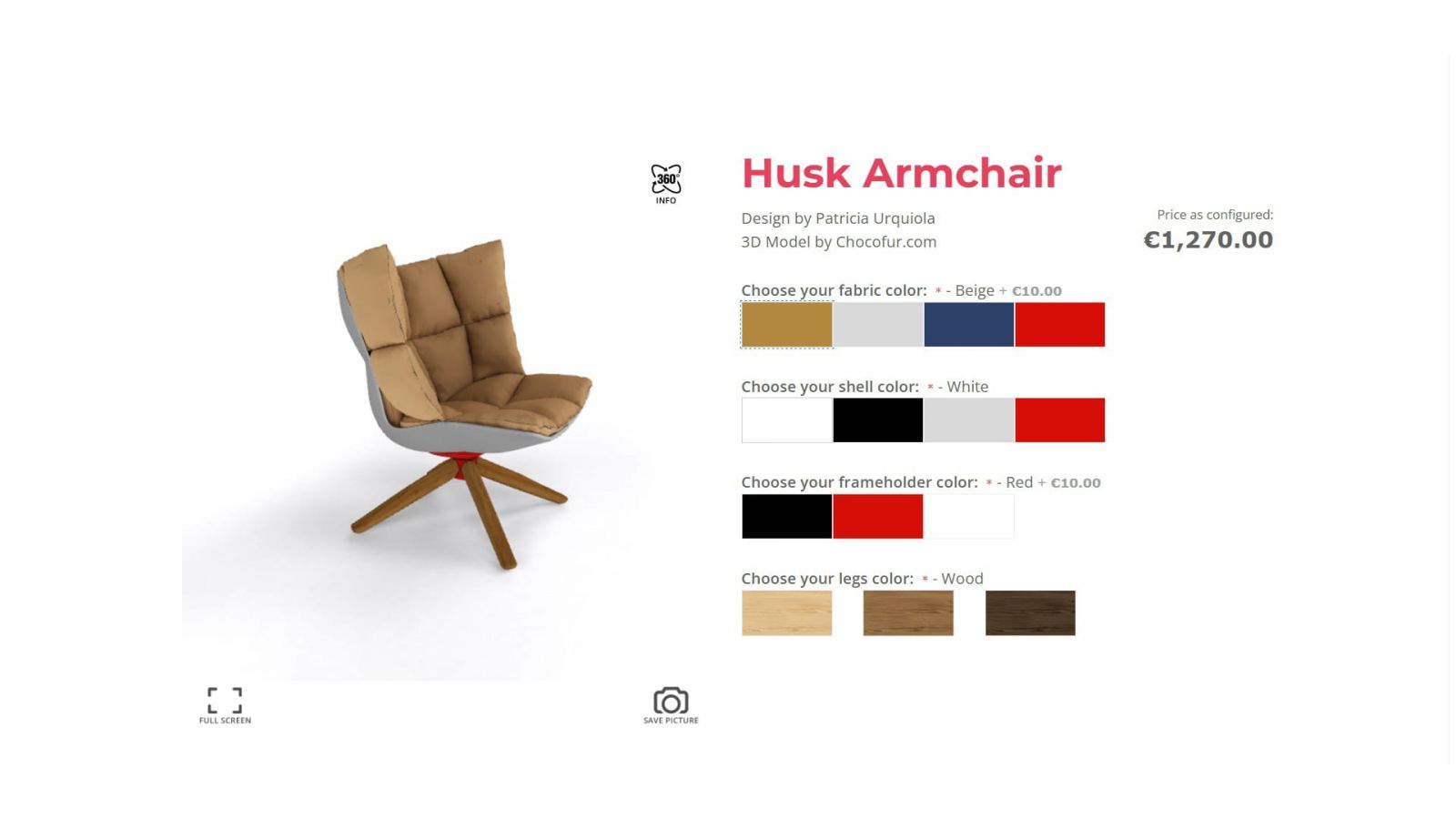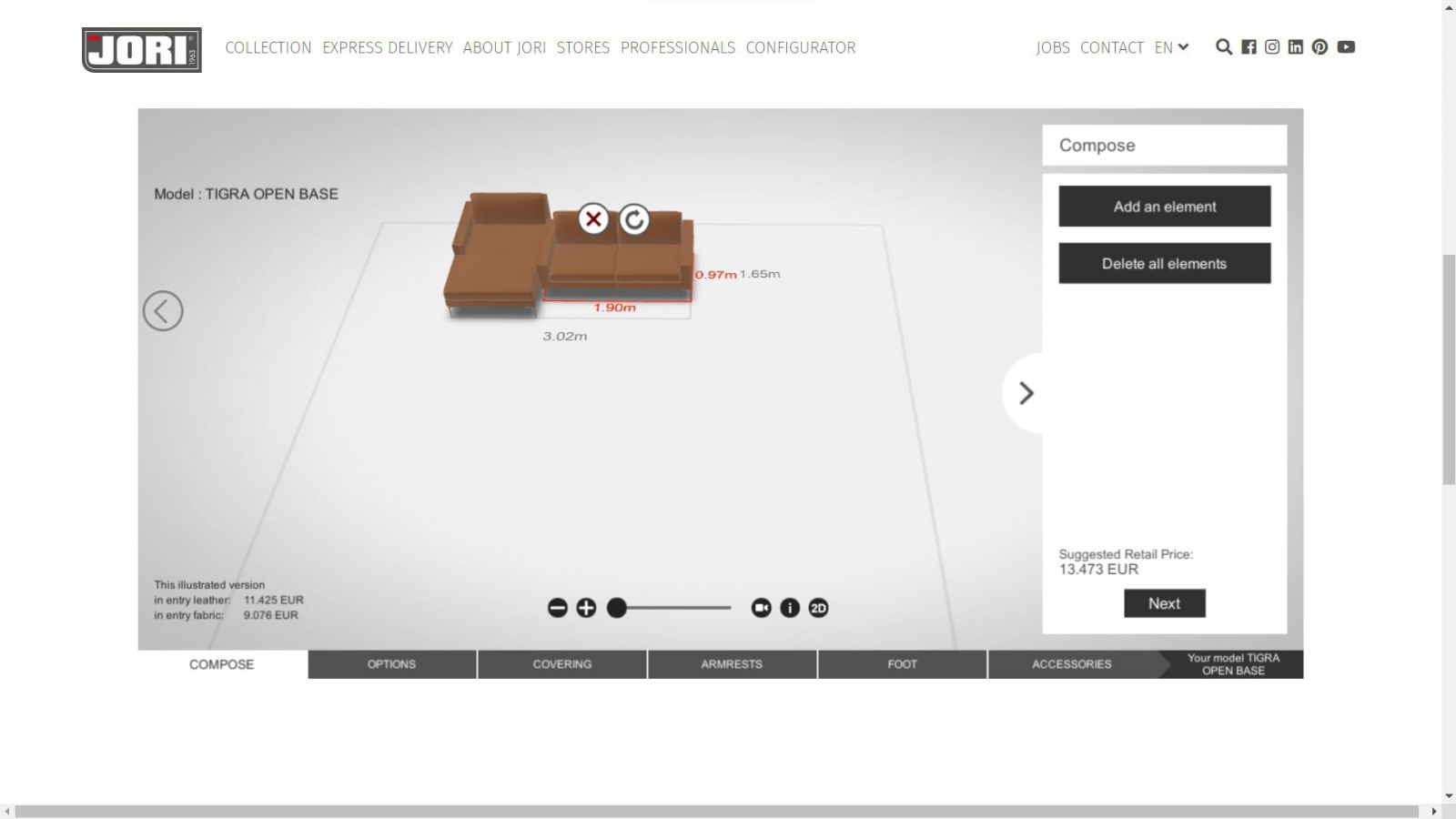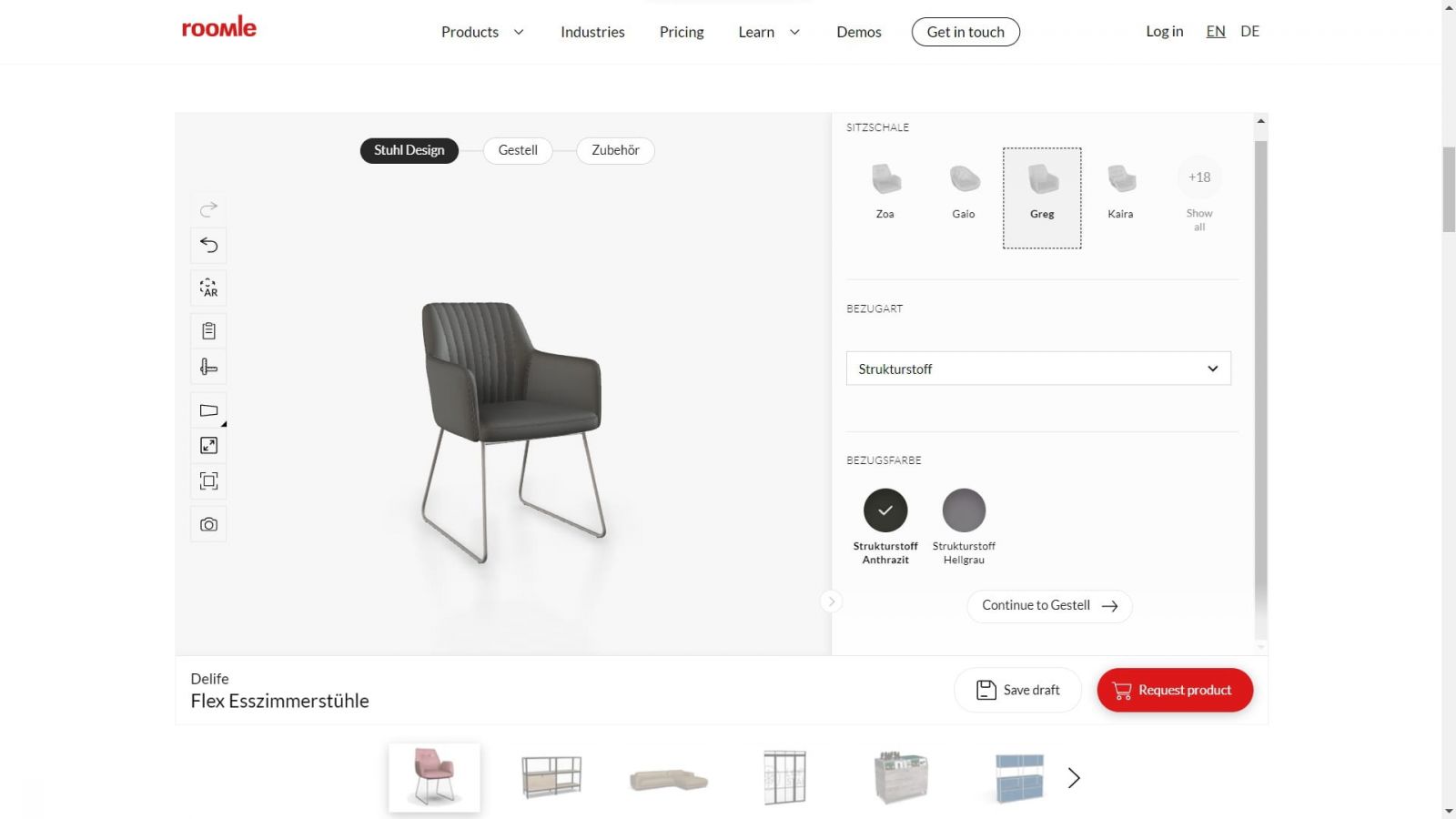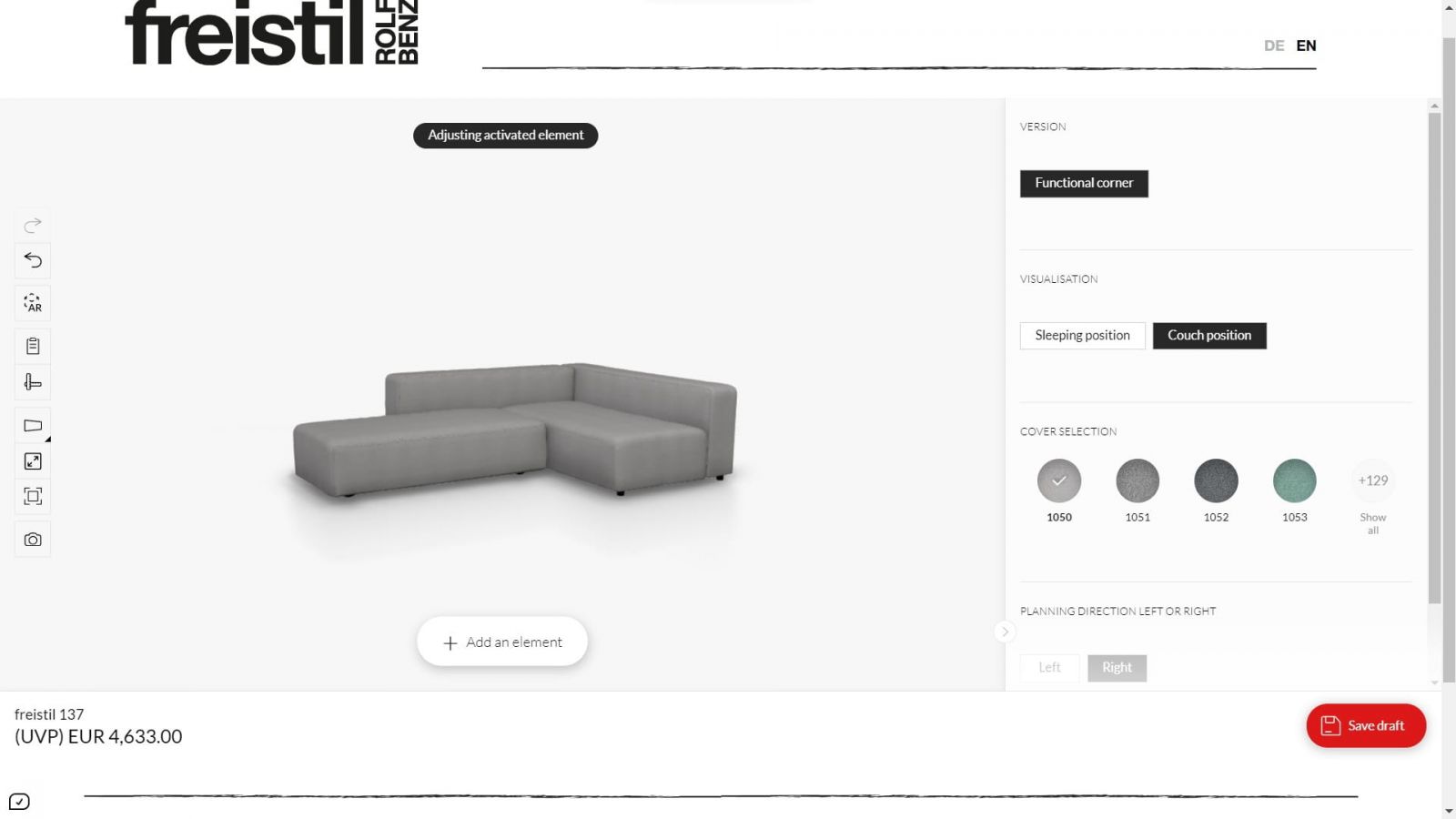In the previous article, we talked about the advantages of using 3D configurators in construction sites.
Today we would like to tell you about the use of 3D configurators in the field of furniture sales, how it affects customers, sales and the overall image of the company.
Recall that 3D Configurator is a web service that allows users to create, configure and visualize 3D models of objects or spaces in real time. It is usually embedded in a website, allowing users to interact with and manipulate 3D models relevant to the project.

How does it work?
The principle of operation of 3D configurators lies in the use of advanced rendering techniques and highly optimized three-dimensional models created in order to bring the virtual representation of the product as close as possible to the real one. The configurator integrates with the product database, which allows you to instantly update information as user changes are made.
Let's go back to 3D configurators in the furniture industry, where they revolutionized by giving customers the opportunity to create custom-made furniture that suits their preferences. These tools use advanced 3D modeling and visualization technologies, simplifying the entire purchase process. In this article, we will look at the applications of 3D configurators in the sale of furniture.
Speaking of 3D configurators, it is impossible not to mention the improvement in the quality of customer service, since 3D configurators have significantly improved the way customers interact with furniture products. They provide a level of visual engagement and immersiveness that surpasses traditional images and videos. Instead of simply viewing static visual elements, customers get full control over the study of their product. This autonomy allows them to view furniture from all sides, at their own pace and in accordance with their unique requirements.
A recent Gartner ® report highlights the impact of 3D configurators on the retail industry, which revealed that 48% of retail, clothing and home design companies have already implemented 3D configurators. The report emphasizes that this approach increases the probability of winning a deal, reduces the cost of processing files, minimizes alterations at the factory and reduces the cost of delivering samples to retail outlets.
From statistics to practice
In addition to 3D configurators that increase sales by reducing costs, the ideal solution for your business is the introduction of augmented reality. Combining the 3D configuration of the product with augmented reality (AR) technology offers customers the perfect solution. This allows them to visualize how a particular piece of furniture fits into their living space before making a purchase. This technology eliminates guesswork by providing an accurate deion of sizes, colors and fit, which gives customers confidence in their decisions.
AR-based configurators reduce the need for extensive customer support requests and product returns, making the shopping process more enjoyable and reducing operating costs.

B2B efficiency
3D configuration is not limited to consumer-oriented applications; it also greatly simplifies the processes of interaction between enterprises (B2B). Designers and manufacturers can use configurators to avoid the cost of manufacturing physical samples. This saves the costs associated with visiting the factory, delivering samples and compiling project files.
Reducing sample delivery by 50% alone can have a significant impact on the profits of B2B brands. Configurators allow sellers to visualize products before mass order, allowing them to experiment with different variations, colors and room furnishings.
Individual furniture configuration
The individual configuration of furniture allows customers to turn their design ideas into reality. 3D configurators integrated into online shopping platforms allow users to personalize their furniture. They can experiment with different options in real time, from shapes and upholstery to accessories. The configurator provides a realistic representation of the final product, eliminating uncertainty and guesswork during the purchase process.

3D Sofa configurator
Sofa configurators have gained popularity in the furniture industry. These tools allow customers to create the sofa of their dreams interactively. Customers can choose a basic sofa module, customize its design, choose colors and materials, and even add or remove functional components. The configurator also offers prices in real time, informing customers about the financial consequences of their choice. Sofa configurators simplify the purchase process, reduce the risk of returning goods and provide significant cost savings for both consumers and businesses.

3D Cabinet Configurator
Modular cabinets and walk-in closets are universal solutions for storing things. Cabinet configurators allow homeowners to develop customized storage solutions that precisely match their space and needs. Users can customize sizes, shelves, drawers and choose from a variety of materials and finishes to match their style and organize the space as much as possible.
.jpg)
Developing an effective configurator, it is important to focus on user-friendliness, maintaining the right balance between customization and simplicity, optimizing user interaction and taking into account the technical aspects of scalability and security.
3D configurators are transforming the furniture industry by improving the quality of customer service, reducing costs and optimizing processes. Whether for consumers or for B2B transactions, these tools allow users to customize furniture, visualize their creations and make informed purchasing decisions. In a growing competitive market, 3D configurators provide a decisive advantage for both customers and businesses.
Thus, 3D configurators allow you to take a fresh look at the furniture industry, enriching it with innovative technologies, increasing the level of customer service and optimizing business processes. Against the background of increasing competition, these tools provide companies with an important competitive advantage, providing a high standard of service for both consumers and B2B partners.
If you want to order a 3D configurator for your furniture company, write to us.




